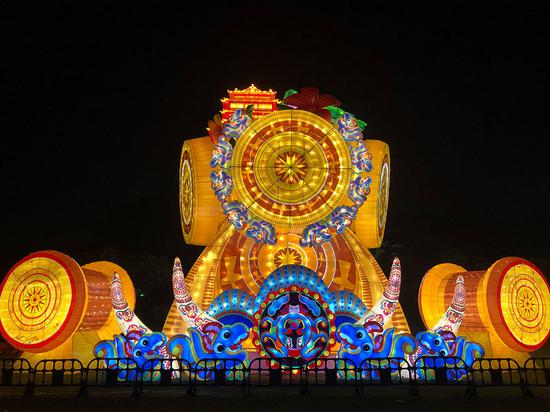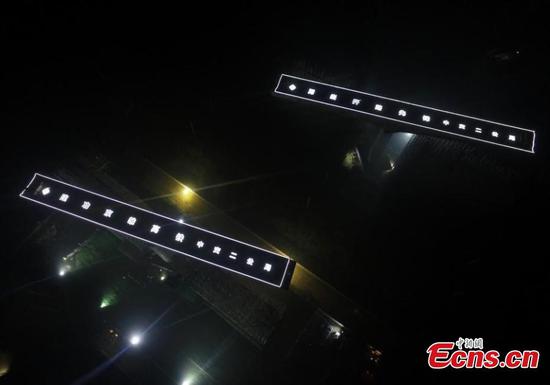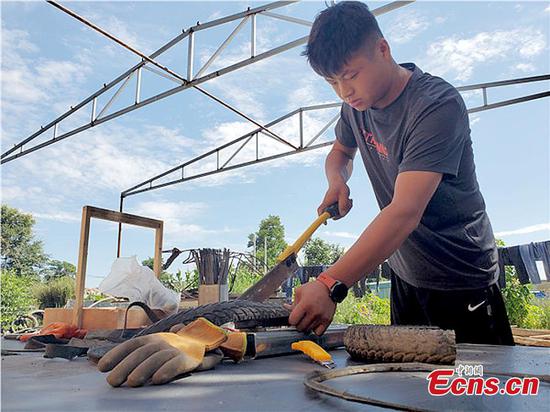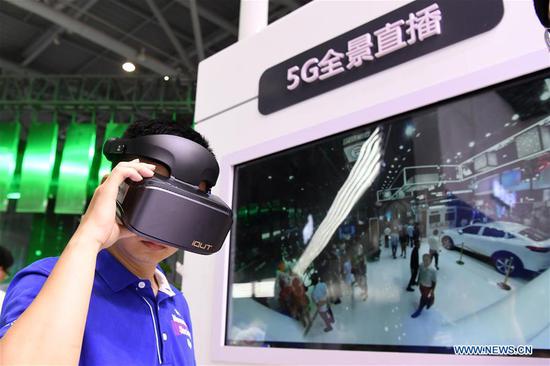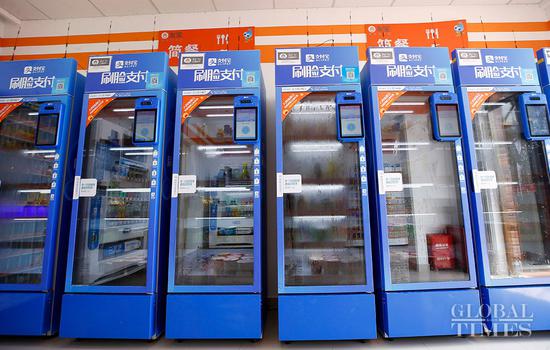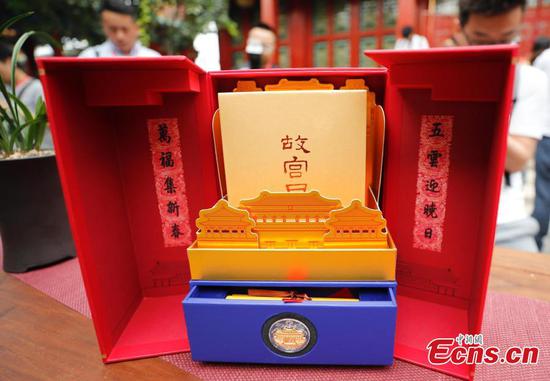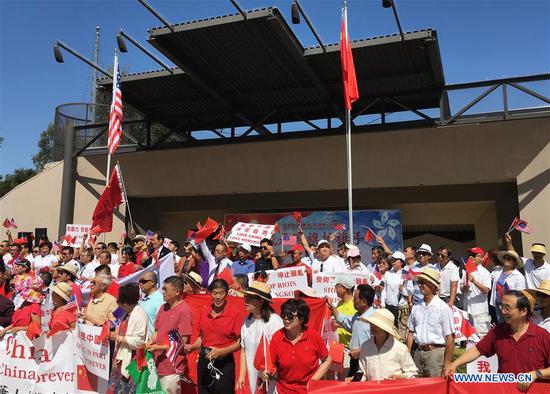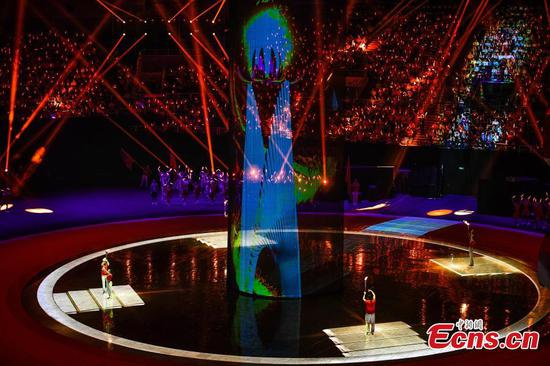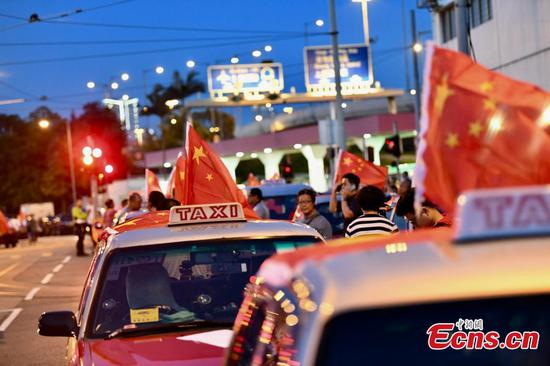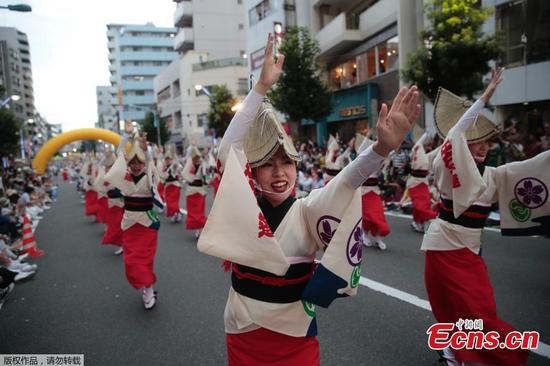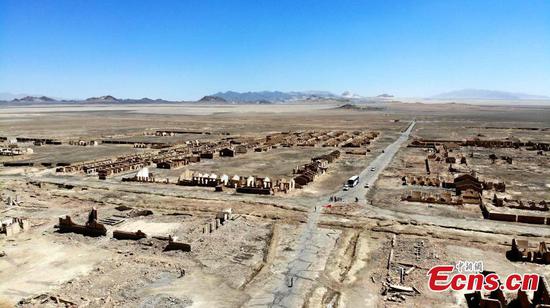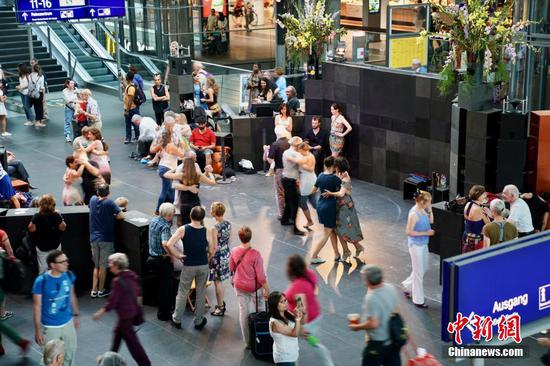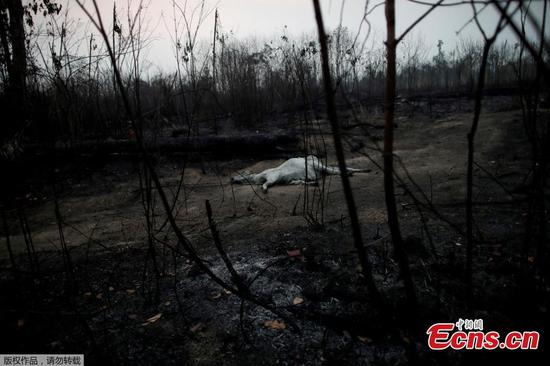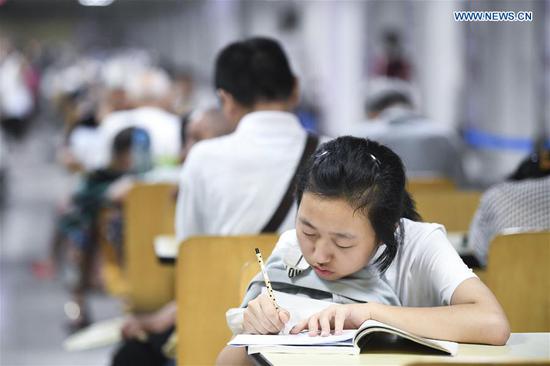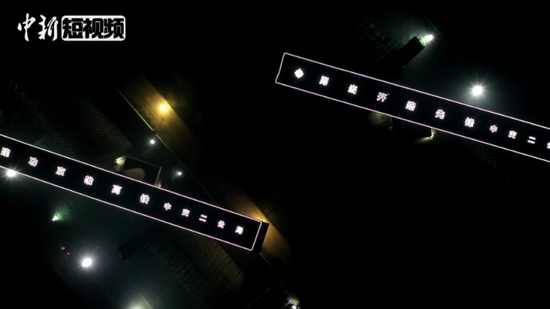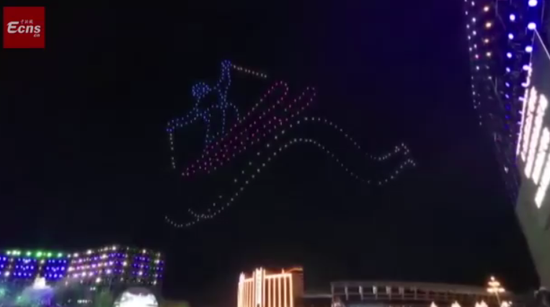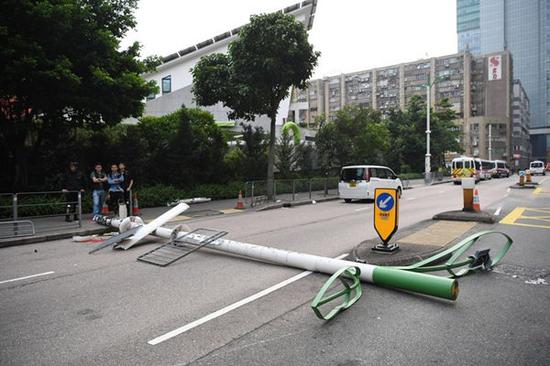
A fallen smart lamppost is seen in Kowloon Bay, south China's Hong Kong on Aug. 24, 2019. (Xinhua)
Despite the habitual silence of some West and Hong Kong media on how rioters have wreaked havoc on Hong Kong's traffic safety system, Hong Kong residents have long been indignant at the systematic smashing of traffic light control boxes and cutting of the power lines of traffic lights.
Vandalism escalated during the last weekend when a flock of rioters tore down a multifunctional smart lamppost and damaged about 20 others.
After watching the barbaric scenes of masked men cutting through the lampposts with electric saws, one could not help wondering how the worsening vandalism and distortion of facts would advance their "peaceful" protests.
RUMORS EASILY REFUTED
The smashing of the smart lampposts in Kowloon Bay came despite repeated reassurance from the government of the Hong Kong Special Administrative Region (HKSAR) that the lampposts, which play crucial roles in building Hong Kong into a smart city, are not monitoring devices.
Those saboteurs and their enablers claimed that the smart lampposts collect information from passers-by and infringe on residents' privacy.
In fact, smart lampposts only collect city data, including traffic, meteorological and air quality data, to facilitate smart city development.
Even the government has no access to the raw data collected. According to Secretary for Innovation & Technology Nicholas Yang, an edge computer in the lamppost takes only one second to analyze the raw data before the data is deleted immediately.
"So basically, what remains is the analyzed data by the edge computer and that data by definition is open data. It's accessible. It's presentable to every citizen to share," said Yang.
In addition, according to the Office of the Government Chief Information Officer (OGCIO), the smart lampposts do not carry any facial recognition function claimed by the rioters, and cannot detect or read information of identity cards.
In fact, to promote transparency, the OGCIO in July released a list of the locations, functions and equipment of the 50 smart lampposts that have already been installed.
It also pledged to release information concerning any future installation of smart lampposts with the same level of transparency.
Unfortunately, the transparency was taken advantage of by the radical protesters to locate the smart lampposts.
To justify their groundless accusation, the violent protesters circulated the picture of a device "BLE Locator Model: SPLD01" found inside the smart lamppost that was torn down.
In fact, the device in question is a Bluetooth beacon for offering positioning service to the public and visitors, which is believed to be more precise than Global Positioning System (GPS).
The device is designed by a local small enterprise called Logistics and Supply Chain MultiTech R&D Center, whose "shareholders/directors ... and all its employees are local citizens born and brought up in Hong Kong," according to a statement by the HKSAR government.
FAR-REACHING DAMAGES
During the weeks-long unrest and violence, the radical protesters and those forces behind them have been relentless in distorting information in their favor.
After the mutilation of the lampposts delivered no evidence of the imaginary "facial recognition software," rumors were still swirling among protesters and online that those lampposts were so-called "facial recognition towers."
According to the local daily Ta Kung Pao, when the Hong Kong Legislative Council (LegCo) approved the funding for the Multi-functional Smart Lampposts pilot scheme in May 2018, opposition lawmaker Jeremy Tam, who was present at the scene of sabotage in Kowloon Bay on Saturday, voted in favor of the scheme.
In addition, six other opposition lawmakers abstained from voting, and another five opposition members were absent from voting, which virtually helped pass the funding.
Amid protracted unrest, the opposition lawmakers now portray themselves as resisting the program.
Responding to the damages to the smart lampposts and the ensuing disinformation, LegCo member Elizabeth Quat said that the opposition has "lost its reason, misleading the public with ulterior motives."
"They once again spread fear, keep hyping up the use of smart lampposts and ignore the development and future of Hong Kong," she said.
Apart from dissemination of misinformation about the installation of smart lampposts, the radical protesters have also subjected the Hong Kong taxpayers to a hefty bill.
According to the OGCIO, the cost for each smart lamppost is about 140,000 Hong Kong dollars (17,845 U.S. dollars). While the authorities are still checking the conditions of the lampposts, given the severe damages, the overall reparation fee could amount to 2.8 million Hong Kong dollars (356,911 U.S. dollars).
If the monetary burden is still manageable, the long-term impact on Hong Kong's innovation and technology industry is unfathomable.
Shortly after the destruction of smart lampposts by radical protesters, news came out that the local small company, which has so far supplied the Bluetooth beacons installed in the smart lampposts, decided to cease cooperation with the HKSAR government upon completion of its work on the existing 50 lampposts.
The contractor is facing "threats to the personal safety of family members of directors and employees," said a statement by the Innovation and Technology Bureau.
"The incident is a serious blow to the hard work of the local innovation and technology industry," the statement concluded.
Speaking at a press conference on Monday, Secretary for Innovation & Technology Yang appealed for public support to technological advancement in Hong Kong.
"Hong Kong should be an open city (to innovation and technology)," said Yang, adding that the HKSAR government will continue to seek public support in a "highly transparent way."
"It is our hope that Hong Kong will have a better future," he said.









